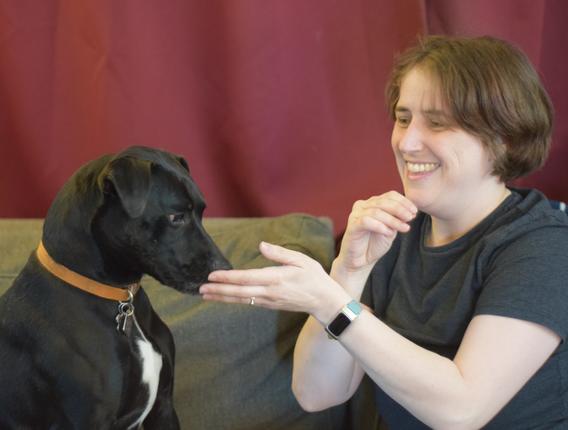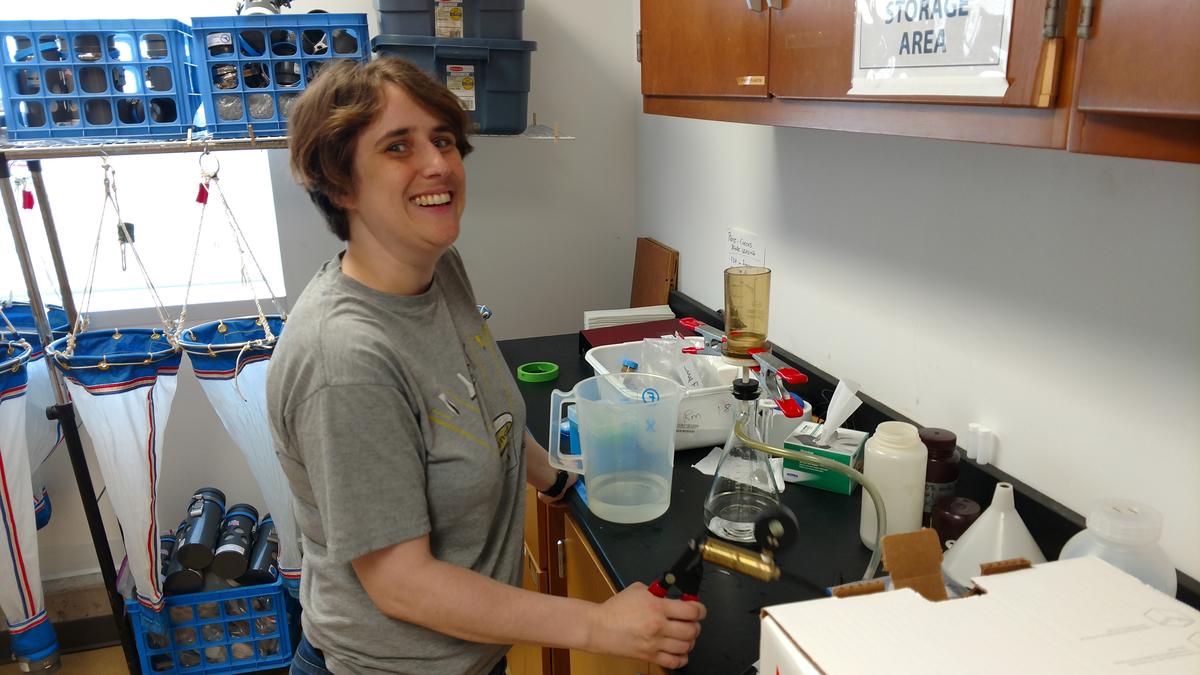You’ve heard the phrase “When one door closes, another opens.” For Malachi Granmo, the closing of the company he worked for back in 2011 opened a door to graduate school and, eventually, to NRRI.
Granmo is a protistologist, an expert in the tiny critters at the bottom of the aquatic food chain – phytoplankton, diatoms and tiny invasive species -- so he spends a lot of time looking through a microscope. But as the seasons change, so do his tasks.
“The work I do is varied and sometimes fast-paced,” he said. “Winter is data entry, lab work and writing papers. But late spring to early fall I’m at a facility in Superior, Wisc., testing ship ballast treatment systems, validating the facility’s results, and helping with other projects. I also go on trips throughout the Great Lakes to test water in ship ballasts.”
On the long trips, Granmo sets up a temporary lab in a hotel and waits for colleagues to bring ballast water samples to him from a ship that is moored at a nearby port. There, he uses a microscope to identify what’s travelling in the ballasts. The samples come in sporadically – it could be 3 p.m. or 3 a.m. – but Granmo is always ready. This year, a week-long trip covered six states – from Minnesota to Ohio and back again.
“I am also working on a project to analyze sediment cores from the St. Louis River Estuary for metals which will teach us about industrial legacy pollution,” said Granmo. “Knowing the historic levels of certain contaminants can help Minnesota set reasonable standards for remediation.”
Circuitous Route

Malachi started his college career at Bowling Green University in Ohio with a nine-week geology field program, travelling across the U.S. in vans and sleeping in tents. He also considered careers in social work and creative writing. But it was a Biology 101 class that introduced him to diatoms and algae. He had found his focus.
“So then I switched majors again in my junior year and started taking biology classes,” he said. “But I still managed to graduate on time.”
In 2015, Granmo graduated with a master’s degree in the Water Resources Science program at the University of Minnesota Duluth, and then joined NRRI as a full-time aquatic research scientist. The Institute is also giving Granmo a chance to stretch – both personally and professionally – with a role as a founding member of NRRI’s Diversity-Equity-Inclusion (DEI) Committee, in which staff volunteers recommend policy and opportunities to NRRI leadership.
“That's a position I wouldn't have seen myself in 10 years ago,” said Granmo, “but with the murder of George Floyd in 2020, I felt like I needed to get involved in some way.”
Collaborative Effort
Granmo takes good advantage of the broad expertise throughout NRRI – especially for geochemistry projects, where he needs geology and mineralogy data.
“I published two substantial papers in the journal PeerJ with help from our Minerals Research Group,” he said. “And I plan to bring them in to help me with minerals characterization for the St. Louis River Estuary project.”
He also collaborates regularly with professors in UMD’s Swenson College of Science and Engineering on the Great Waters Research Collaborative ballast water treatment system research.
Central Support
It takes a lot of lab supplies and unique equipment to pull off the work Granmo does. He relies heavily on the purchasing support of Tammy Thomasson-Ehrhart to get what he needs. Given recent supply chain issues this is often quite challenging. He also gets assistance from shop professional Scott Johnson to construct specialized sediment sampling devices.
Off Hours
Granmo enjoys getting together with friends to play the fantasy Dungeons & Dragons tabletop game. He is also training his dog, Tahani, a rescued mix-breed, with a goal to compete in agility courses.
“She’s a really smart and energetic dog and these activities help her work out her physical and mental energy,” Granmo added.
Edited to reflect name change from Meagan Aliff.
